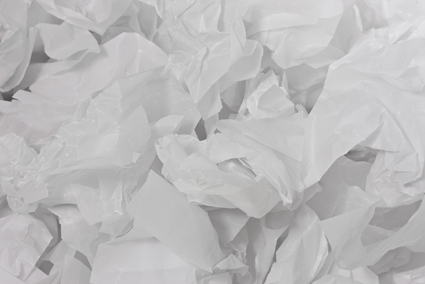

Krumpaður
álpappír innan á herbergisgluggum
slekkur á sólinni og býr til
örþunnt garðlag. Öðrum megin
brenna logarnir en handan þynnunar svífur
myrkrið milli grannra ljósstauta. Af hugsæld
og glettni hafa öndunarholur veggopsins verið
fylltar með álpappír. Í pappírnum
hafa myndast hvítir demantar eða harðgert
stjörnugras sem virðast andstæða
sjálfs sín: við fyrstu sýn
er þetta harðgert efni en þegar betur
er að gáð, í kenjóttri
rökkurmyndinni, er þetta óefniskennd
tálsýn. Það er eitthvað
á þá leið sem best er að
lýsa harðlendri Miðnesheiðinni,
þar sem Reykjanesbæ og Flugstöð
Leifs Eiríkssonar er að finna, en þeir
sem þar dvelja eru staddir á einhverskonar
glætu: í efniskenndri veröld þar
sem renna saman landfræðilegt rými
og menningarleg viðfangsefni. Hernaðuppbyggingin
á svæðinu á tímum kalda
stríðsins staðsetti “landráðaskagann”
(Reykjanesið) mitt á milli stórveldanna
tveggja, Sovétríkjanna gömlu og
Bandaríkjanna. Í kjölfarið
var svo opnað fyrir óefnislegri menningu
ungrar æsku, þessa ómótaða
leirs, sem litið var á sem vonarglætu
pólitískra hugsjóna og botnlausrar
neysluhyggju. Harðlend Miðnesheiðin framkallar
þannig ljósmyndalegar hugrenningar bæði
ljóss og myrkurs – þar sem fléttast
saman tilbúið myrkur óttans sem
skýtur stjörnugrasi glætunnar á
loft. Seigrennandi og slímug augun venjast
myrkrinu og stjörnubirtunni, svo allt virðist
gegnsætt og æskulega bjartur heimur. Í
þeirri veröld, sem er ung og ný,
eru tölur sem huliðshjálmur myrkursins.
Þyrnóttar tölur óma barnslegri
röddu sem væru himneskir herir skynseminnar
– og vonarglætunnar. Innan í þessum
sýndarheimi bernskunnar býr hins vegar
ósýnilegt fælingarkerfi kalda
stríðsins eða galdrakver, talnasæring,
sem brennir hold og afskræmir hvað sem fyrir
verður í sprengjuflugi. Þegar talnakerfið
verður þannig að sprengjukerfi þyrlast
upp ógnir og í myrkrinu standa eftir
dauðar minjar; fisléttur pappír
er minnir á risastórar húðflögur
sem hleypa í gegnum sig veruleikanum á
bakvið særingarnar. Þannig er hægt
að líta á ljósbrigðin
í stökkum teikningapappírnum sem
einhverskonar afhjúpun í krumpaðri
heiftarreiði. Krump eða eyðilegging á
sléttum yfirborðum verða að fingraförum
tilfinninganna, sálarástands,pólitískra
aðgerða. En sú reiði verður
alltaf óskynsamleg, andstæð þeim
rökrétta veruleika talnanna, þeirrar
einlægni sem hljómar úr barka
sérhvers barns - glætu nýs dags.
Það er því við þessar
aðstæður sem þrívíð
töfravirkni mannsins framkallast í stjörnuskotnu
myrkrinu: hann brýst fram í þessum
þunnskornu upplýstum rúnaristum,
krumpuðum veruleika ógna og efnisleysis
í áþreifanlegri gerningaþoku.
Verkin reynast því ekki glætur
gleðinnar einnar heldur illvígar dreprúnir,
tortímingastafir eða forarþrær
hins illa. Á sama tíma eru verkin framkölluð
ljósmynd af manninum og þess sem hann
getur orðið.
Sigurjón
Baldur Hafsteinsson
Crumpled
aluminium foil covers the windows on the inside switches
off the sun and creates a thin layer. On one side
the flames burn but beyond the membrane darkness floats
between narrow light beams. With teasing playfulness
the breathing holes of the wall openings have been
filled in with aluminium foil. In the foil white diamonds
are created or hardy star grass that appears to be
in conflict with itself: On first impression this
is a robust material but as one gets a closer look,
in the erratic twilight, it becomes clear that this
is an immaterial illusion. Something along those lines
best describes the rugged terrain of Midnesheidi where
Reykjanesbaer and Leifur Eiriksson airport are to
be found, but those who dwell here are positioned
in some sort of a flicker: In a material world where
geographical space and cultural topics merge. The
militarization of the area during the time of the
Cold war placed the “high treason peninsula“(the
Reykjanes) smack in the middle of the two superpowers,
the old Soviet Union and the United States. What followed
was the opening up of the more immaterial culture
of youth, it‘s unformed clay was looked upon
as a flicker of hope for political idealism and bottomless
consumerism. In a sense the harsh Midnesheidi develops
photographic trails of thought both of light and dark-
where a manmade darkness of fear is intertwined with
the star grass’s reverberating flickers of light.
Mucous the eyes slowly watering adapt to the dark
and starlight so that everything appears transparent
and a youthful bright world comes to light. In a world,
that is young and new, numbers can be seen as an invisibility
cloak of darkness. Thorny numbers resound in a childish
voice as though they were heavenly armies of sensibility-and
a flicker of hope. Within this illusory world of childhood
resides the invisible terror system of the cold war
or a book of magic, exorcism by numbers that burns
flesh and disfigures whatever gets in the path of
the dropping of bombs. When a number system is turned
into a bombing system threats swirl up and in darkness
dead remains are left behind; flimsy paper that calls
to mind enormous flakes of skin through which reality
behind the exorcism can be glimpsed. In such a way
the changes in light on the brittle drawing paper
can be seen as a sort of unveiling in a crumpled rage.
The crumpling or destruction of smooth surfaces turns
into fingerprints of the emotions, a state of mind
for political action. But such fury will always be
unwise, in opposition to the logical reality of the
numbers, the sincerity that sounds from the throat
of each and every child - the flickering light of
a new day. It is therefore under these conditions
that the three-dimensional magic of man is developed
in the star-studded darkness: It is expressed by the
thinly sliced illuminated inscriptions of runes, a
crumpled reality of threats and immateriality within
a tangible invoked fog. The work therefore conveys
not the flicker of joyfulness alone but also evil
murderous runes, letters of destruction or mud drains
of evil. At the same time the work brings out developed
photographs of man and of what he can become.
Sigurjón
Baldur Hafsteinsson
Translation; Didda Hjartardóttir